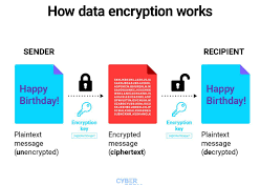Attacks on the software supply chain are becoming more prevalent, prompting organizations to prioritize the security of their Continuous Integration/Continuous Deployment (CI/CD) systems. Protecting these supply chains is critical to prevent widespread vulnerabilities,state the solutions.
A data breach refers to a security incident where personal data is accidentally or unlawfully exposed, altered, or accessed. The implications for organizations are significant: Operational Disruption: Breaches disrupt normal operations, affecting productivity and customer service. Reputation Damage:Read more
A data breach refers to a security incident where personal data is accidentally or unlawfully exposed, altered, or accessed. The implications for organizations are significant:
Operational Disruption: Breaches disrupt normal operations, affecting productivity and customer service.
Reputation Damage: Trust erodes when customers learn of a breach, impacting brand reputation.
Loss of Customer Trust: Customers may switch to competitors due to privacy concerns.
Regulatory Consequences: Organizations must comply with data protection laws and report breaches promptly.
To respond effectively:
Notification: Notify affected individuals promptly if their rights and freedoms are at risk.
Internal Procedures: Establish robust breach detection and reporting procedures.
Record Keeping: Document all breaches, even if not all require reporting.
Resource Allocation: Plan for call centers and communication channels to manage the response.
Understanding these implications and having a well-prepared response plan is crucial for minimizing damage and safeguarding data



To enhance the security of CI/CD systems and protect the software supply chain, organizations should consider implementing the following solutions: Security Testing: Conduct regular security assessments, including static and dynamic code analysis, vulnerability scanning, and penetration testing, toRead more
To enhance the security of CI/CD systems and protect the software supply chain, organizations should consider implementing the following solutions:
-
-
-
-
-
-
-
-
See lessSecurity Testing: Conduct regular security assessments, including static and dynamic code analysis, vulnerability scanning, and penetration testing, to identify and address security weaknesses in the CI/CD pipeline.
Access Control: Implement strict access controls and least privilege principles to ensure that only authorized personnel have access to the CI/CD systems and that privileges are limited to what is necessary for each role.
Artifact Signing: Implement code signing and artifact signing to verify the integrity and authenticity of software components at each stage of the CI/CD pipeline, thereby preventing tampering and unauthorized modifications.
Secure Dependencies: Regularly update and validate third-party dependencies to mitigate the risk of using vulnerable components that could introduce security threats into the software supply chain.
Continuous Monitoring: Implement real-time monitoring and logging mechanisms to detect and respond to any anomalous activities or security incidents within the CI/CD environment promptly.
Automated Security Checks: Integrate automated security checks into the CI/CD pipeline to identify security issues early in the development process and prevent vulnerabilities from being deployed into production.
Secure Configuration: Ensure that all components of the CI/CD infrastructure are securely configured, including servers, containers, and orchestration tools, to reduce the attack surface and enhance overall system security.
Incident Response Plan: Develop and regularly test an incident response plan that outlines the steps to be taken in case of a security breach or compromise within the CI/CD pipeline to minimize the impact and facilitate a swift and effective response.